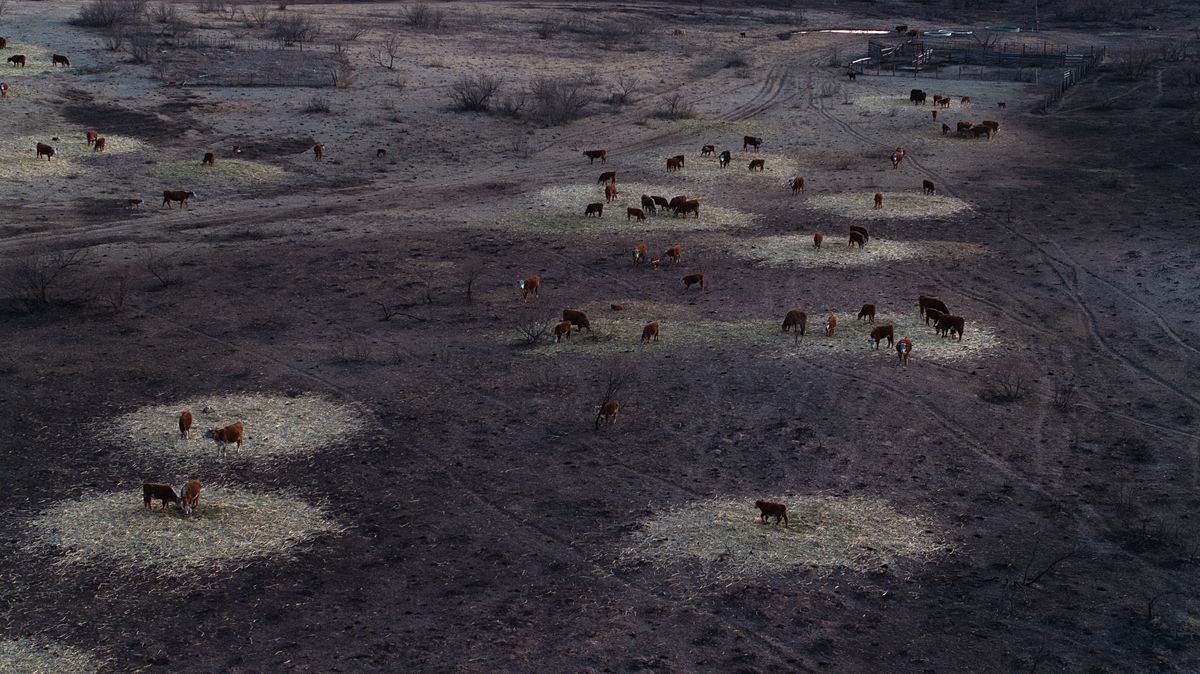Huge Texas blaze shows power-line fires are a widespread threat

Massive wildfires sparked by power lines used to be a California problem, one many utility executives considered safely confined to the Golden State. No more.
Texas officials on Thursday blamed the state’s largest-ever fire on electrical lines sparking in dry brush, fed by blasting winds into a million-acre inferno. The same combination of high winds, power lines and dry grass last year may have been responsible for razing the seaside town of Lahaina on Maui, a place once considered too lush to burn. Also this summer, the Gray Fire in Medical Lake was caused by sparks from an Inland Power and Light security light mounted to a pole, a state Department of Natural Resources investigation found. Fast-moving fires blamed on utility equipment leveled homes in Colorado in 2021 and Oregon in 2020.
Across a vast swath of the Western U.S., climate change and aging infrastructure have forced utilities to confront a harsh new reality that threatens both the communities they serve as well as their own survival. The danger first became clear in California, where the state’s largest utility – PG&E Corp. – tumbled into bankruptcy in 2019 after fires sparked by its power lines killed dozens of people in wine country and the Sierra Nevada foothills. But it’s spreading, as a warmer and often drier climate leaves landscapes primed to burn.
“We’re having fires at times of the year when we didn’t used to have them – and in parts of the country where they didn’t used to have them,” said Emily Fisher, executive vice president for clean energy at the Edison Electric Institute, a utility industry trade group. “The changes are impacting the entire West and are moving further east all the time.”
Investors have noticed. Electric utilities once were considered safe investments, prized for their dividends and slow, steady growth. But last month, famed value-investor Warren Buffett warned the “specter of zero profitability or even bankruptcy” loomed over utilities in some Western states.
“Certain utilities might no longer attract the savings of American citizens,” Buffett said in his annual letter to investors in his Berkshire Hathaway Inc. Berkshire’s PacifiCorp utility faces claims of about $8 billion from fires in Oregon and California that lawsuits blame on the utility’s equipment and this week was hit with a verdict worth at least $29 million in one of the cases.
Two days after Buffett’s letter, the Smokehouse Creek Fire erupted in the Texas Panhandle and quickly raged out of control. The state forest service on Thursday said its investigators had determined power lines ignited both that blaze and another nearby, the Windy Deuce Fire. Utility-owner Xcel Energy Inc. said earlier in the day that its equipment was likely involved in the start of the Smokehouse Creek Fire, which has destroyed up to 64 homes and killed at least two people. Xcel said it doesn’t believe its power lines sparked the Windy Deuce blaze.
Xcel disputes claims made in a lawsuit filed against the company last week on behalf of a homeowner that it acted negligently in maintaining and operating its power infrastructure ahead of the Smokehouse Creek Fire. Xcel, which operates utilities in eight states in the central and Western U.S., also faces lawsuits that accuse one of its units of starting the most destructive fire in Colorado history. State officials concluded that was caused in part by a power line that snapped.
Michael Wara, director of the Climate and Energy Policy Program at Stanford University, said the wildfire problem first appeared in Southern California before expanding to Northern California and then other Western states. “We are seeing more frequent fire weather conditions that create significant danger,” he said.
The threat has changed the way utilities operate, sometimes in ways that anger their customers. California utilities now switch off power lines when fire danger is highest – typically, in advance of wind storms during the annual dry season – leaving homeowners and businesses to fend for themselves. The companies also are spending heavily to harden their equipment, replacing old wooden power poles, covering some power lines with a protective sheath while burying others underground. The inevitable impact on customers’ bills has already provoked a backlash, but more spending may be needed.
“A lot of the focus had been in California for the last decade, but you are seeing more wildfire incidents impact other utilities, and that’s going to put more pressure on the industry overall to address wildfire risk,” said Travis Miller, a utility analyst for Morningstar Inc. “The recent wildfires have raised some questions about whether utilities are investing enough to maintain a reliable and safe system,” Miller said.
More stories like this are available on bloomberg.com
©2024 Bloomberg L.P.